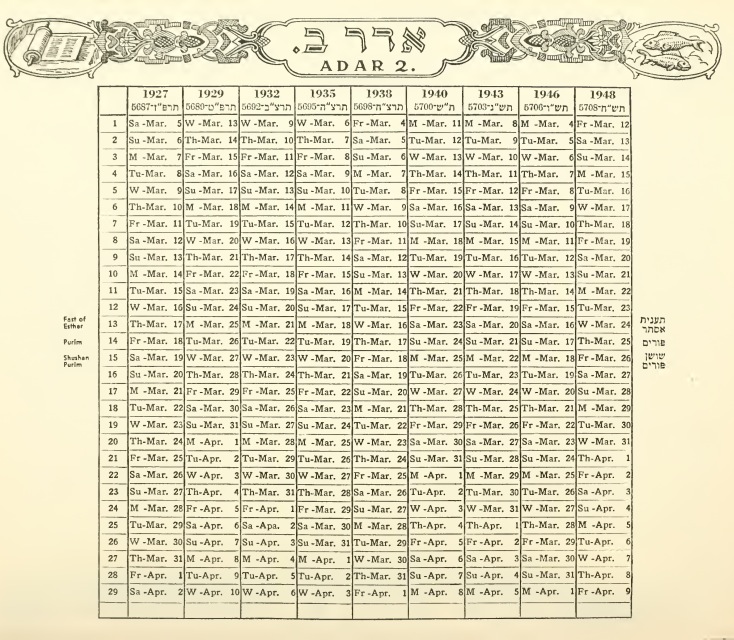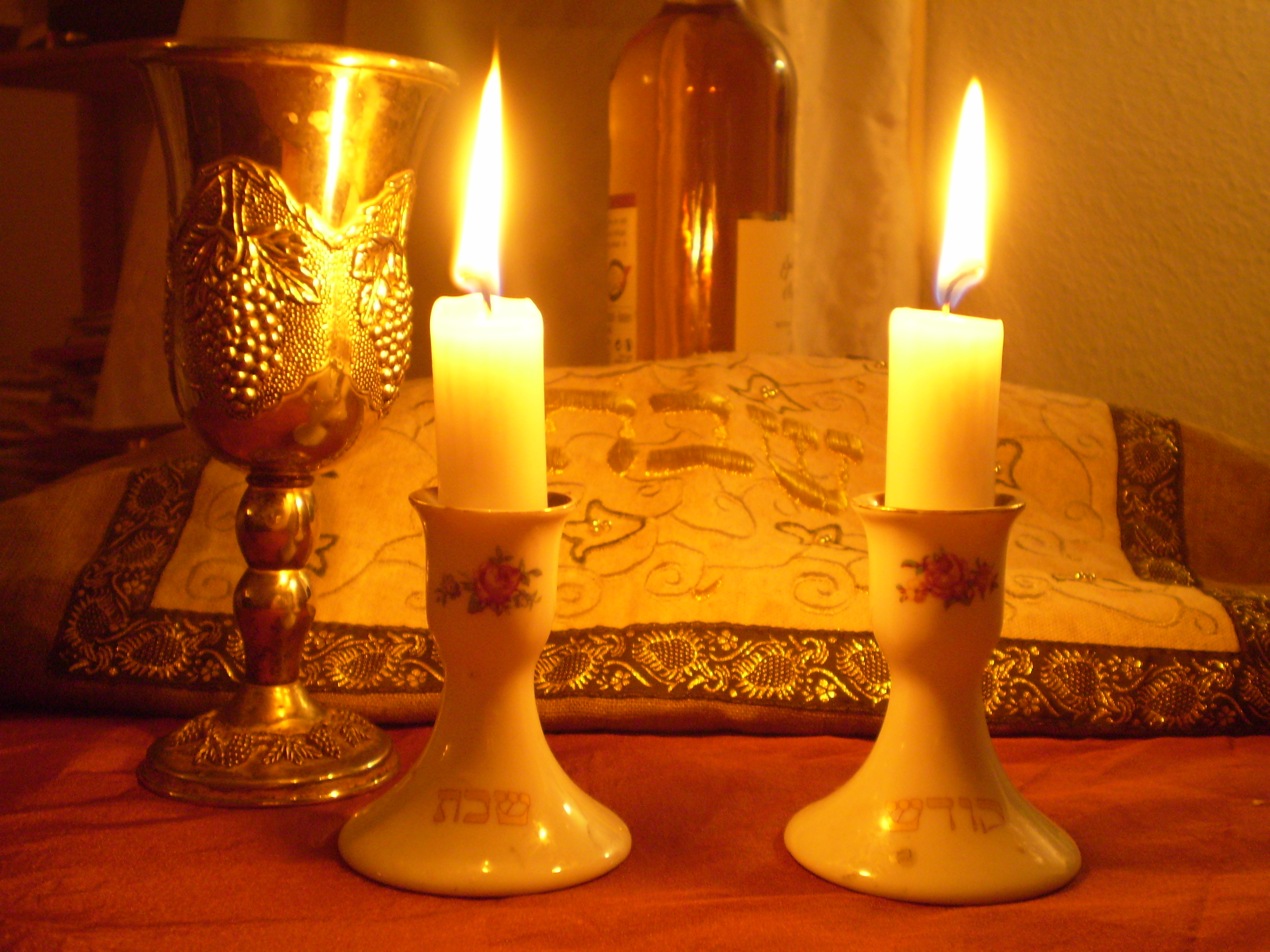|
Jewish Religious Year
The Jewish religious year consists of the events, observances and liturgies observed by Jews over the course of a year. Holidays and other observances are fixed on the Jewish, or Hebrew calendar, a lunisolar calendar, but float with respect to other calendars in widespread use, such as the Gregorian calendar. Further information on the Jewish religious year is available in the following articles: * Hebrew calendar, the calendar basis for Jewish religious observances * Jewish holiday, describing the Jewish Sabbath, festivals, and other observances throughout the year *Weekly Torah reading, describing the annual cycle of Torah readings on the Sabbaths of the year *Jewish prayer Jewish prayer ( he, תְּפִלָּה, ; plural ; yi, תּפֿלה, tfile , plural ; Yinglish: davening from Yiddish 'pray') is the prayer recitation that forms part of the observance of Rabbinic Judaism. These prayers, often with i ... provides a gateway to resources about other liturgical v ... [...More Info...] [...Related Items...] OR: [Wikipedia] [Google] [Baidu] |
Gregorian Calendar
The Gregorian calendar is the calendar used in most parts of the world. It was introduced in October 1582 by Pope Gregory XIII as a modification of, and replacement for, the Julian calendar. The principal change was to space leap years differently so as to make the average calendar year 365.2425 days long, more closely approximating the 365.2422-day 'tropical' or 'solar' year that is determined by the Earth's revolution around the Sun. The rule for leap years is: There were two reasons to establish the Gregorian calendar. First, the Julian calendar assumed incorrectly that the average solar year is exactly 365.25 days long, an overestimate of a little under one day per century, and thus has a leap year every four years without exception. The Gregorian reform shortened the average (calendar) year by 0.0075 days to stop the drift of the calendar with respect to the equinoxes.See Wikisource English translation of the (Latin) 1582 papal bull '' Inter gravissimas''. Second, ... [...More Info...] [...Related Items...] OR: [Wikipedia] [Google] [Baidu] |
Hebrew Calendar
The Hebrew calendar ( he, הַלּוּחַ הָעִבְרִי, translit=HaLuah HaIvri), also called the Jewish calendar, is a lunisolar calendar used today for Jewish religious observance, and as an official calendar of the state of Israel. It determines the dates for Jewish holidays and the appropriate Torah reading, public reading of Weekly Torah portion, Torah portions, ''yahrzeits'' (dates to commemorate the death of a relative), and daily Psalm readings, among many ceremonial uses. In Israel, it is used for religious purposes, provides a time frame for agriculture, and is an official calendar for civil holidays, alongside the Gregorian calendar. The present Hebrew calendar is the result of a process of development, including a Babylonian calendar, Babylonian influence. Until the Tannaitic period (approximately 10–220 Common Era, CE), the calendar employed a new lunar phase, crescent moon, with an Intercalation (timekeeping), additional month normally added every two or ... [...More Info...] [...Related Items...] OR: [Wikipedia] [Google] [Baidu] |
Jewish Holiday
Jewish holidays, also known as Jewish festivals or ''Yamim Tovim'' ( he, ימים טובים, , Good Days, or singular , in transliterated Hebrew []), are holidays observed in Judaism and by JewsThis article focuses on practices of mainstream Rabbinic Judaism. Karaite Judaism#The calendar, Karaite Jews and Samaritans#Samaritanism, Samaritans also observe the biblical festivals, but not in an identical fashion and not always at exactly the same time. throughout the Hebrew calendar. They include religious, cultural and national elements, derived from three sources: biblical '' mitzvot'' ("commandments"), rabbinic mandates, and the history of Judaism and the State of Israel. Jewish holidays occur on the same dates every year in the Hebrew calendar, but the dates vary in the Gregorian. This is because the Hebrew calendar is a lunisolar calendar (based on the cycles of both the sun and moon), whereas the Gregorian is a solar calendar. General concepts Groupings Certain ter ... [...More Info...] [...Related Items...] OR: [Wikipedia] [Google] [Baidu] |
Weekly Torah Reading
It is a custom among religious Jewish communities for a weekly Torah portion to be read during Jewish prayer services on Monday, Thursday, and Saturday. The full name, ''Parashat HaShavua'' ( he, פָּרָשַׁת הַשָּׁבוּעַ), is popularly abbreviated to ''parashah'' (also ''parshah'' or parsha), and is also known as a Sidra or Sedra . The ''parashah'' is a section of the Torah (Five Books of Moses) used in Jewish liturgy during a particular week. There are 54 parshas, or ''parashiyot'' in Hebrew, and the full cycle is read over the course of one Jewish year. Content and number Each Torah portion consists of two to six chapters to be read during the week. There are 54 weekly portions or ''parashot''. Torah reading mostly follows an annual cycle beginning and ending on the Jewish holiday of Simchat Torah, with the divisions corresponding to the lunisolar Hebrew calendar, which contains up to 55 weeks, the exact number varying between leap years and regular years. On ... [...More Info...] [...Related Items...] OR: [Wikipedia] [Google] [Baidu] |
Jewish Prayer
Jewish prayer ( he, תְּפִלָּה, ; plural ; yi, תּפֿלה, tfile , plural ; Yinglish: davening from Yiddish 'pray') is the prayer recitation that forms part of the observance of Rabbinic Judaism. These prayers, often with instructions and commentary, are found in the ''Siddur'', the traditional Jewish prayer book. Prayer, as a "service of the heart", is in principle a Torah-based commandment. It is not time-dependent and is mandatory for both Jewish men and women. However, the rabbinic requirement to recite a specific prayer text does differentiate between men and women: Jewish men are obligated to recite three prayers each day within specific time ranges (''zmanim''), while, according to many approaches, women are only required to pray once or twice a day, and may not be required to recite a specific text. Traditionally, three prayer services are recited daily: * Morning prayer: ''Shacharit'' or ''Shaharit'' (, "of the dawn") * Afternoon prayer: ''Mincha' ... [...More Info...] [...Related Items...] OR: [Wikipedia] [Google] [Baidu] |
Jewish Holy Days
Jewish holidays, also known as Jewish festivals or ''Yamim Tovim'' ( he, ימים טובים, , Good Days, Grammatical number, or singular , in Romanization of Hebrew, transliterated Hebrew language, Hebrew []), are holidays observed in Judaism and by JewsThis article focuses on practices of mainstream Rabbinic Judaism. Karaite Judaism#The calendar, Karaite Jews and Samaritans#Samaritanism, Samaritans also observe the biblical festivals, but not in an identical fashion and not always at exactly the same time. throughout the Hebrew calendar. They include religious, cultural and national elements, derived from three sources: Hebrew Bible, biblical ''Mitzvah, mitzvot'' ("commandments"), Rabbinic Judaism, rabbinic mandates, and the Jewish history, history of Judaism and the Israel#Independence and first years, State of Israel. Jewish holidays occur on the same dates every year in the Hebrew calendar, but the dates vary in the Gregorian calendar, Gregorian. This is because the Heb ... [...More Info...] [...Related Items...] OR: [Wikipedia] [Google] [Baidu] |
Jewish Law And Rituals
Jews ( he, יְהוּדִים, , ) or Jewish people are an ethnoreligious group and nation originating from the Israelites Israelite origins and kingdom: "The first act in the long drama of Jewish history is the age of the Israelites""The people of the Kingdom of Israel and the ethnic and religious group known as the Jewish people that descended from them have been subjected to a number of forced migrations in their history" and Hebrews of historical Israel and Judah. Jewish ethnicity, nationhood, and religion are strongly interrelated, "Historically, the religious and ethnic dimensions of Jewish identity have been closely interwoven. In fact, so closely bound are they, that the traditional Jewish lexicon hardly distinguishes between the two concepts. Jewish religious practice, by definition, was observed exclusively by the Jewish people, and notions of Jewish peoplehood, nation, and community were suffused with faith in the Jewish God, the practice of Jewish (religious) la ... [...More Info...] [...Related Items...] OR: [Wikipedia] [Google] [Baidu] |



.jpg)
